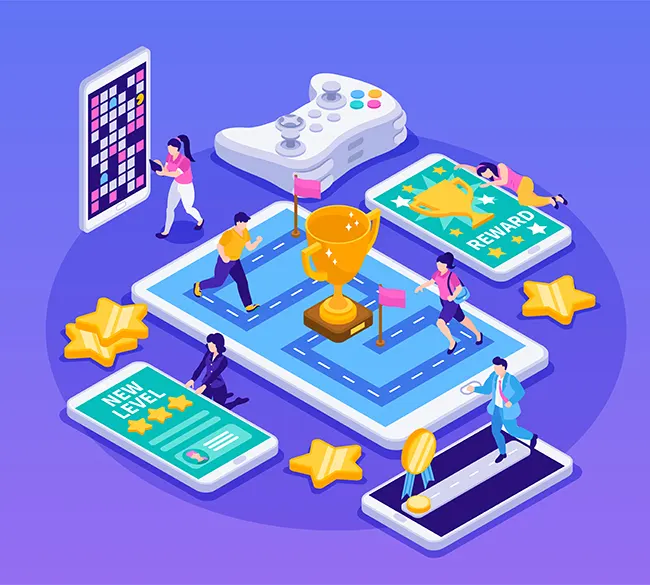Gamification in the Contact Centre: Driving Engagement or Just a Gimmick?

The concept of gamification, applying game-design elements and game principles in non-game contexts, has gained significant traction across various industries, including contact centres. The promise is enticing: boost agent engagement, improve performance, and foster a more dynamic work environment. However, the critical question remains: Is gamification a powerful tool for driving meaningful results, or is it merely a fleeting gimmick that offers superficial benefits? A deeper look reveals that its effectiveness hinges on strategic implementation, alignment with organisational culture, and a clear understanding of its potential to transform otherwise “idle time” into productive development.
Gamification, when poorly conceived or implemented, can indeed fall flat, becoming nothing more than a temporary novelty. If the metrics are arbitrary, the rewards uninspiring, or the competition unfair, agents will quickly see through the veneer. However, when designed thoughtfully, gamification can be a potent motivator. The key lies in understanding what truly drives human behaviour: a sense of achievement, recognition, mastery, and healthy competition. Effective gamification ties these intrinsic motivators to measurable contact centre KPIs such as first contact resolution, customer satisfaction scores, average handling time, or adherence to quality standards. It transforms mundane tasks into challenges, provides immediate feedback, and offers clear pathways for progression and reward. This isn’t about simply adding points and badges; it’s about structuring work to tap into the innate human desire for progress and accomplishment. For instance, a system that tracks individual and team performance, offers virtual badges for reaching specific milestones, and provides real-time leaderboards can foster a sense of accomplishment and friendly rivalry.
Culture as the Foundation of Gamification
The success of gamification is also deeply intertwined with the broader organisational culture. A healthy, supportive, and performance-driven culture is essential for any initiative to thrive. If the culture is one of distrust or excessive pressure, gamification can be perceived as just another tool for surveillance or micromanagement. Conversely, in a culture that values transparency, collaboration, and continuous improvement, gamification can serve as a powerful reinforcement mechanism. It can foster camaraderie among teams, encourage peer-to-peer learning, and celebrate individual and collective successes.
For gamification to avoid being a gimmick, it must align with the company’s values and objectives. It should be seen as a tool to empower agents, not control them. If the culture promotes psychological safety, agents will be more willing to participate, take risks, and learn from their “game” performance. Furthermore, leadership must model enthusiastic participation and genuinely celebrate the achievements that gamification highlights, signalling its importance and legitimacy.
Moreover, gamification offers a unique opportunity to make “idle time” genuinely productive. Instead of having agents passively wait for calls or tasks, gamified training modules, quizzes, and scenario simulations can be deployed during these periods. This transforms what might otherwise be dead time into valuable learning and development opportunities. Agents can earn points for completing knowledge base refreshers, practicing new scripts, or engaging in simulated challenging customer interactions. This not only keeps them engaged but also continuously upskills them, ensuring they are always ready for the next interaction.
For example, a contact centre could implement short, gamified quizzes on new product features or common customer issues, with points awarded for speed and accuracy. This makes learning fun and competitive, reinforcing knowledge retention without adding pressure during live calls. Such activities during idle time prevent boredom and enhance skill acquisition, directly contributing to improved agent performance and customer experience.
Best Practices for Lasting Impact
To ensure gamification avoids the “gimmick” trap, organisations must adhere to several best practices:
- Clear Objectives and Metrics: Link gamification directly to specific business goals (e.g., reduce AHT, increase CSAT).
- Meaningful Rewards and Recognition: Rewards don’t always have to be monetary; public recognition, skill mastery, or special privileges can be highly motivating.
- Fairness and Transparency: Ensure the rules are clear, the scoring is transparent, and everyone has an equal opportunity to succeed.
- Variety and Evolution: Keep the gamified elements fresh and evolving to prevent stagnation and maintain interest.
- Agent Involvement: Involve agents in the design and feedback process to ensure the gamification resonates with their needs and motivations.
- Integration with Coaching: Use gamified performance data as a basis for constructive coaching conversations, focusing on improvement rather than just competition.
Gamification is far from a gimmick when implemented strategically and thoughtfully within a supportive cultural framework. It offers a powerful avenue to enhance agent engagement, drive performance improvements, and optimise resource utilisation, particularly by transforming idle time into productive learning opportunities. By focusing on intrinsic motivators and aligning with core business objectives, gamification can elevate the contact centre experience for both agents and customers, fostering a dynamic, high-performing environment.


